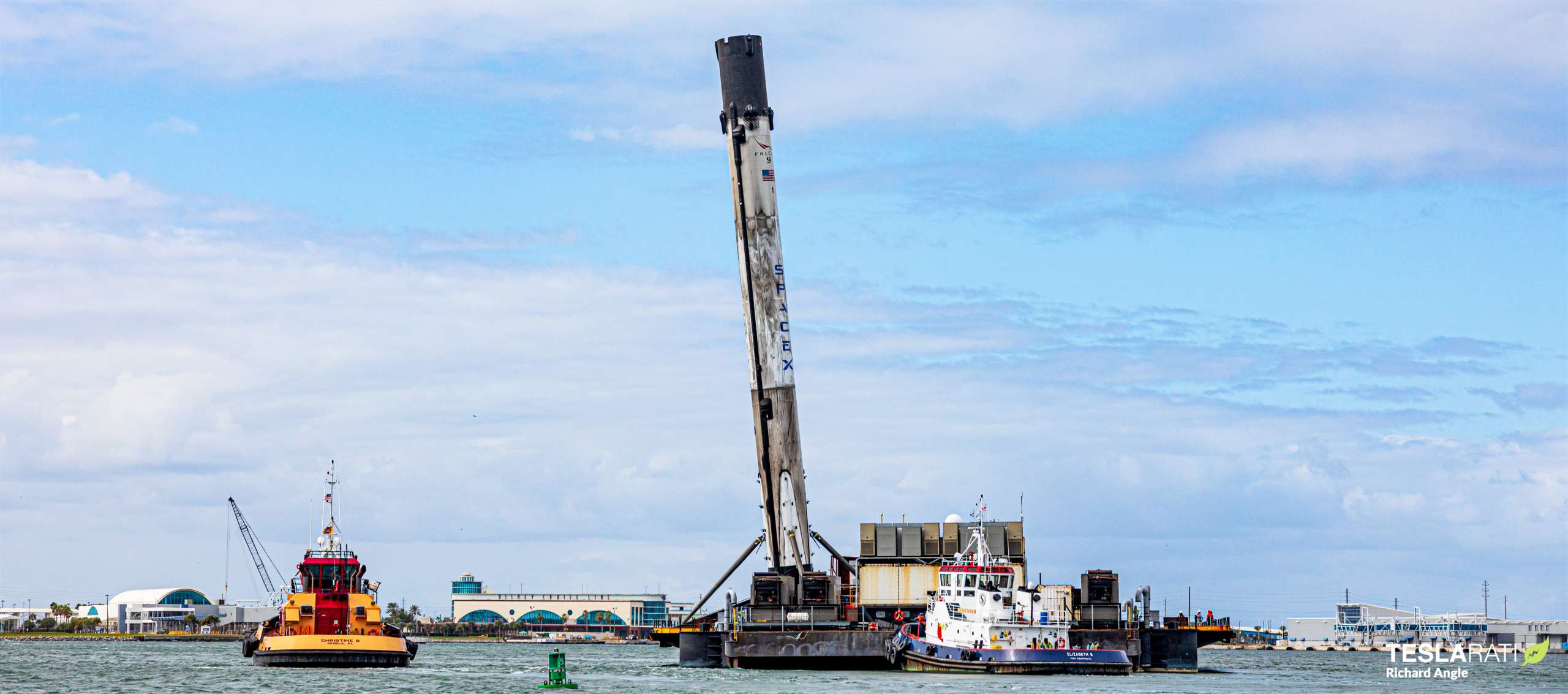
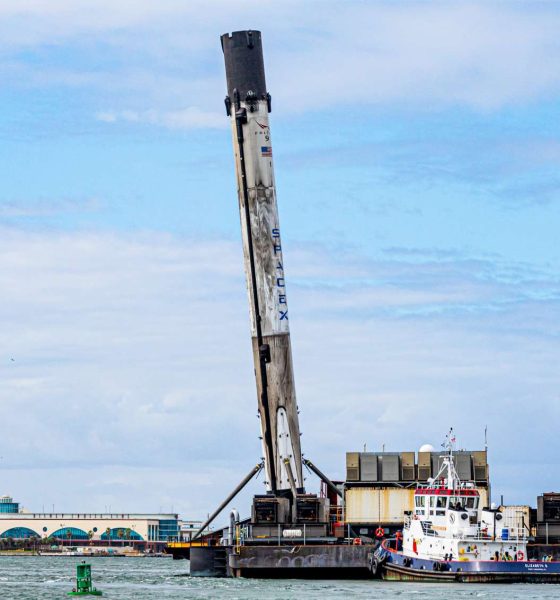
News
SpaceX’s most important Falcon 9 booster yet returns to port with a lean
On November 19th, what is likely SpaceX’s most important Falcon 9 booster yet returned to Port Canaveral with a surprise – perhaps the most dramatic lean ever observed on one of the recovered rockets.
Tilted a solid 10+ degrees from vertical, the lean was immediately visible as soon as the top of the rocket crest the horizon, and it later became clear that one of Falcon 9 booster B1061’s four landing legs had no contact at all with drone ship Just Read The Instruction’s (JRTI) deck. Four days prior, Falcon 9 (and B1061) became the first commercially-developed rocket in history to be certified to launch NASA astronauts, a feat it pulled off flawlessly. Crew Dragon safely delivered four astronauts to the International Space Station on November 16th, marking the culmination of more than half a decade of (mostly) uninterrupted work.
Even before Crew Dragon and Falcon 9’s momentous Crew-1 launch, though, NASA had already revealed some details that would make parts of Crew-1 even more important and the follow-up Crew-2 launch – scheduled as early as March 2021 – perhaps the most significant mission in SpaceX’s history.
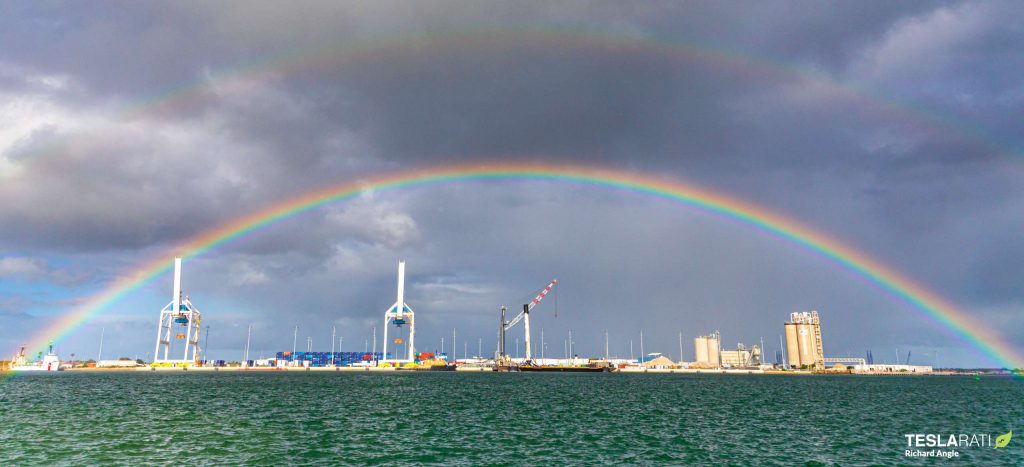
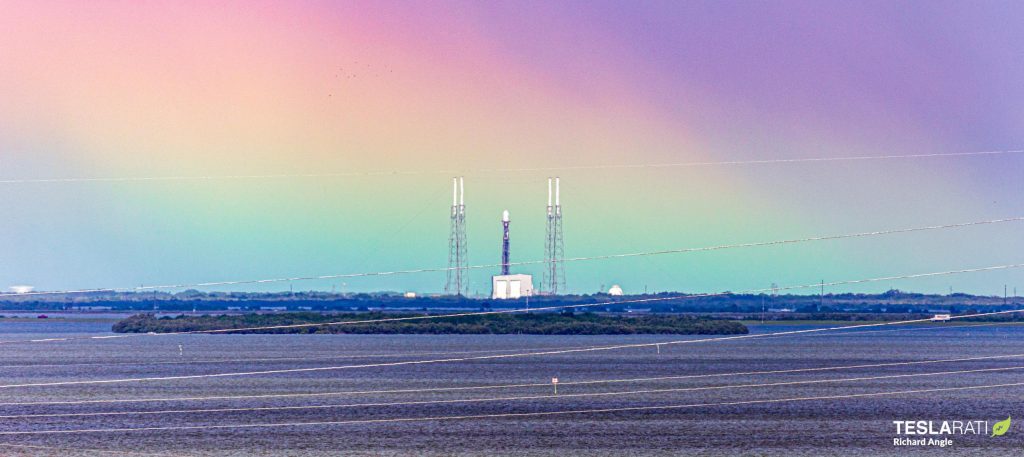
In short, less than a month after SpaceX’s equally flawless Crew Dragon Demo-2 astronaut launch debut, NASA contract modifications revealed that the agency had permitted SpaceX to reuse both Dragon capsules and Falcon 9 boosters on upcoming astronaut launches.
“In a wholly unexpected turn of events, a modification to SpaceX’s ~$3.1 billion NASA Commercial Crew Program (CCP) contract was spotted on June 3rd. Without leaving much room for interpretation, the contract tweak states that SpaceX is now “[allowed to reuse] the Falcon 9 launch vehicle and Crew Dragon spacecraft beginning with” its second operational astronaut launch, known as Post Certification Mission-2 (PCM-2) or Crew-2.”
Teslarati.com — June 9th, 2020
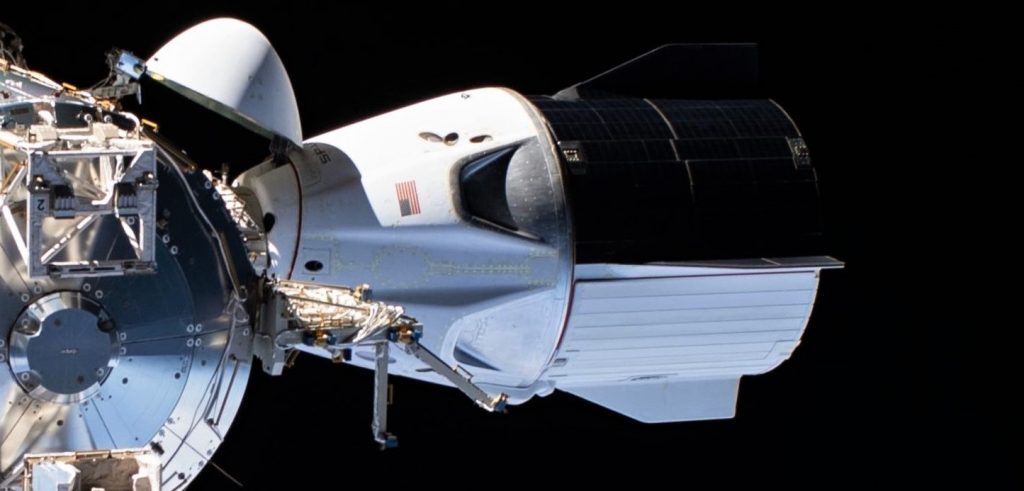
A few short months after that discovery, NASA itself specifically announced that it had given SpaceX the go-ahead to reuse Demo-2 Crew Dragon capsule C206 and Crew-1 Falcon 9 booster B1061 on Crew-2, the company’s second operational astronaut launch. Scheduled no earlier than March 31st, 2021, Crew-2 will most likely launch before the Crew-1 Crew Dragon departs the space station and returns its four crew members to Earth, a milestone expected sometime in April.
For almost anyone who has followed NASA’s Commercial Crew Program (CCP) and its attitude towards SpaceX’s reusability efforts from the beginning, the space agency’s rapid willingness to trust its most important cargo – humans – to flight-proven Dragons and Falcon 9 boosters came as a huge surprise. If SpaceX is able to reuse both capsule C206 and booster B1061 as planned, Crew-2 will without a doubt be the most significant milestone in commercial spaceflight history, simultaneously proving that astronauts can be safely launched on commercial flight-proven rockets and spacecraft.
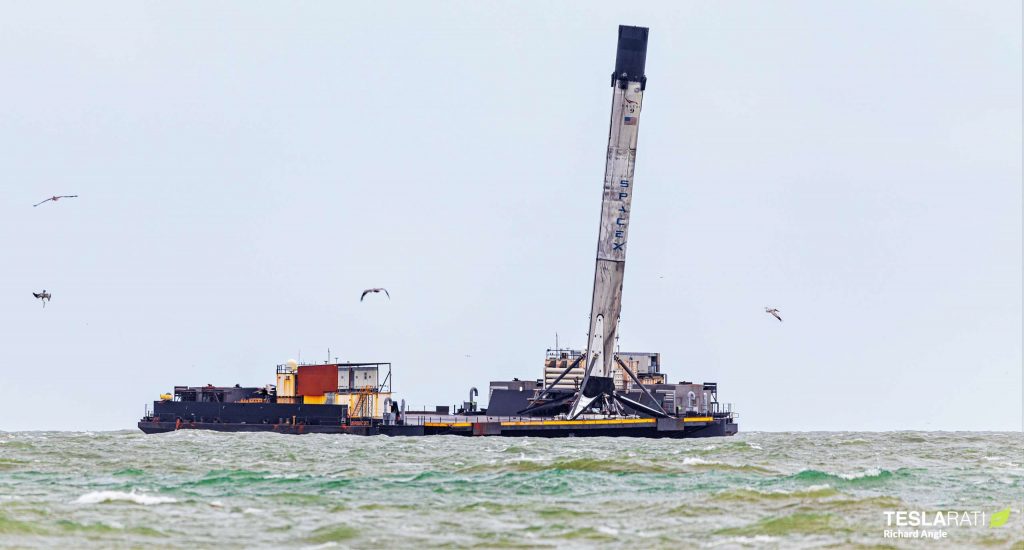
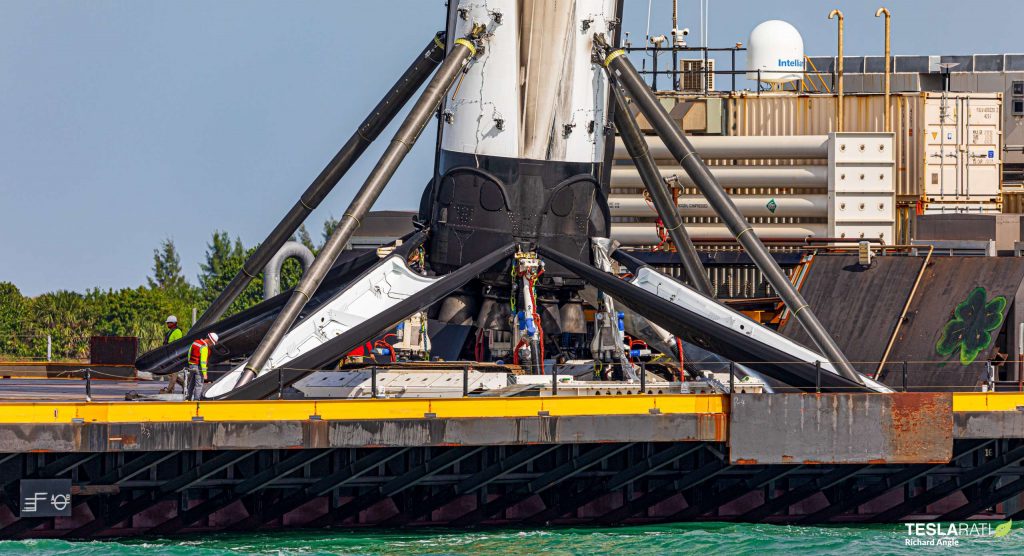
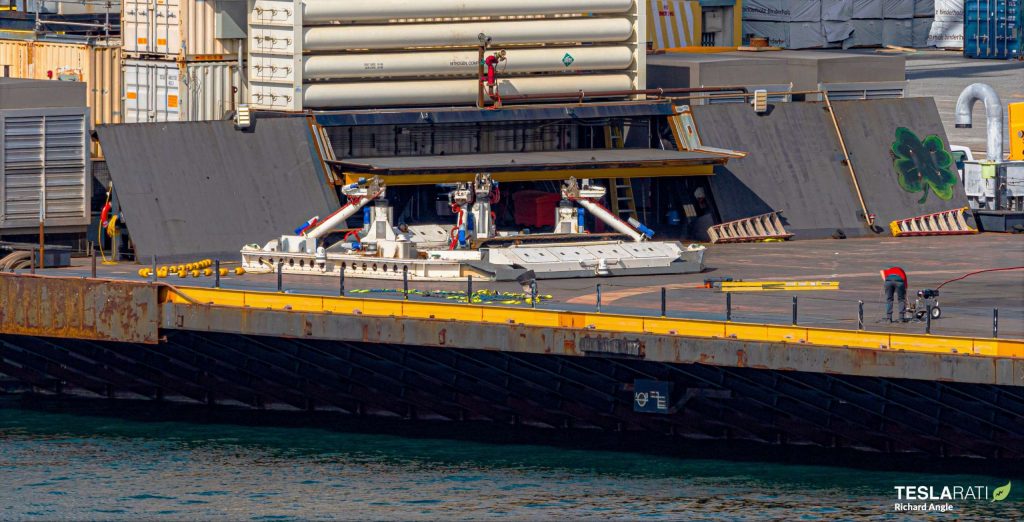
Of course, while Demo-2 Crew Dragon capsule C206 may have already been successfully recovered, SpaceX still had to land Falcon 9 booster B1061 and safely return it to port after Crew-1 before it could consider reusing it on Crew-2. Based on the rocket’s appearance upon its arrival at Port Canaveral, B1061 had an extremely close call. With what can be intuited from observation alone, it appears that sometime after B1061 landed and before the drone ship’s tank-like ‘Octagrabber’ robot could secure the booster, a stray swell or sudden burst of high seas must have bucked Just Read The Instructions about, causing B1061 to slide around on the slippery deck.
That would explain why the Falcon 9 first stage arrived in port on one of the far corners of drone ship JRTI – also sign that B1061 likely hit the yellow barrier included specifically to prevent boosters from sliding off drone ship decks. At the same time, B1061 must have had a moderately rough landing, causing at least one of its four legs to expend a large portion of a single-use shock absorber called a “crush core,” leaving the booster sitting at an angle. Based on photos of the arrival, that tilt likely left JRTI’s Octagrabber unable to latch onto all four of Falcon 9’s hold-down clamps, forcing recovery technicians to improvise and manually chain the rocket to the deck where the robotic solution fell short.


Thankfully, the SpaceX recovery team’s apparent heroics and luck proved to be enough and the sturdy Falcon 9 booster was returned to dry land without issue, lifted off of JRTI’s deck around 24 hours after arriving in port. Based on photos of the crush cores at the bottom tip of each leg, B1061’s rough landing and eventful journey was fairly mild as far as they come and, as CEO Elon Musk notes, crush core replacement is likely all that’s needed to make the rocket good as new.
Had B1061 been lost at sea, Crew-2 would have almost certainly been delayed to give SpaceX enough time to come up with an entirely new Falcon 9 first stage. Luckily for SpaceX, that didn’t happen and the company’s plans to launch astronauts on the flight-proven booster are still in play.

Elon Musk
Starlink passes 9 million active customers just weeks after hitting 8 million
The milestone highlights the accelerating growth of Starlink, which has now been adding over 20,000 new users per day.

SpaceX’s Starlink satellite internet service has continued its rapid global expansion, surpassing 9 million active customers just weeks after crossing the 8 million mark.
The milestone highlights the accelerating growth of Starlink, which has now been adding over 20,000 new users per day.
9 million customers
In a post on X, SpaceX stated that Starlink now serves over 9 million active users across 155 countries, territories, and markets. The company reached 8 million customers in early November, meaning it added roughly 1 million subscribers in under seven weeks, or about 21,275 new users on average per day.
“Starlink is connecting more than 9M active customers with high-speed internet across 155 countries, territories, and many other markets,” Starlink wrote in a post on its official X account. SpaceX President Gwynne Shotwell also celebrated the milestone on X. “A huge thank you to all of our customers and congrats to the Starlink team for such an incredible product,” she wrote.
That growth rate reflects both rising demand for broadband in underserved regions and Starlink’s expanding satellite constellation, which now includes more than 9,000 low-Earth-orbit satellites designed to deliver high-speed, low-latency internet worldwide.
Starlink’s momentum
Starlink’s momentum has been building up. SpaceX reported 4.6 million Starlink customers in December 2024, followed by 7 million by August 2025, and 8 million customers in November. Independent data also suggests Starlink usage is rising sharply, with Cloudflare reporting that global web traffic from Starlink users more than doubled in 2025, as noted in an Insider report.
Starlink’s momentum is increasingly tied to SpaceX’s broader financial outlook. Elon Musk has said the satellite network is “by far” the company’s largest revenue driver, and reports suggest SpaceX may be positioning itself for an initial public offering as soon as next year, with valuations estimated as high as $1.5 trillion. Musk has also suggested in the past that Starlink could have its own IPO in the future.
News
NVIDIA Director of Robotics: Tesla FSD v14 is the first AI to pass the “Physical Turing Test”
After testing FSD v14, Fan stated that his experience with FSD felt magical at first, but it soon started to feel like a routine.

NVIDIA Director of Robotics Jim Fan has praised Tesla’s Full Self-Driving (Supervised) v14 as the first AI to pass what he described as a “Physical Turing Test.”
After testing FSD v14, Fan stated that his experience with FSD felt magical at first, but it soon started to feel like a routine. And just like smartphones today, removing it now would “actively hurt.”
Jim Fan’s hands-on FSD v14 impressions
Fan, a leading researcher in embodied AI who is currently solving Physical AI at NVIDIA and spearheading the company’s Project GR00T initiative, noted that he actually was late to the Tesla game. He was, however, one of the first to try out FSD v14.
“I was very late to own a Tesla but among the earliest to try out FSD v14. It’s perhaps the first time I experience an AI that passes the Physical Turing Test: after a long day at work, you press a button, lay back, and couldn’t tell if a neural net or a human drove you home,” Fan wrote in a post on X.
Fan added: “Despite knowing exactly how robot learning works, I still find it magical watching the steering wheel turn by itself. First it feels surreal, next it becomes routine. Then, like the smartphone, taking it away actively hurts. This is how humanity gets rewired and glued to god-like technologies.”
The Physical Turing Test
The original Turing Test was conceived by Alan Turing in 1950, and it was aimed at determining if a machine could exhibit behavior that is equivalent to or indistinguishable from a human. By focusing on text-based conversations, the original Turing Test set a high bar for natural language processing and machine learning.
This test has been passed by today’s large language models. However, the capability to converse in a humanlike manner is a completely different challenge from performing real-world problem-solving or physical interactions. Thus, Fan introduced the Physical Turing Test, which challenges AI systems to demonstrate intelligence through physical actions.
Based on Fan’s comments, Tesla has demonstrated these intelligent physical actions with FSD v14. Elon Musk agreed with the NVIDIA executive, stating in a post on X that with FSD v14, “you can sense the sentience maturing.” Musk also praised Tesla AI, calling it the best “real-world AI” today.
News
Tesla AI team burns the Christmas midnight oil by releasing FSD v14.2.2.1
The update was released just a day after FSD v14.2.2 started rolling out to customers.

Tesla is burning the midnight oil this Christmas, with the Tesla AI team quietly rolling out Full Self-Driving (Supervised) v14.2.2.1 just a day after FSD v14.2.2 started rolling out to customers.
Tesla owner shares insights on FSD v14.2.2.1
Longtime Tesla owner and FSD tester @BLKMDL3 shared some insights following several drives with FSD v14.2.2.1 in rainy Los Angeles conditions with standing water and faded lane lines. He reported zero steering hesitation or stutter, confident lane changes, and maneuvers executed with precision that evoked the performance of Tesla’s driverless Robotaxis in Austin.
Parking performance impressed, with most spots nailed perfectly, including tight, sharp turns, in single attempts without shaky steering. One minor offset happened only due to another vehicle that was parked over the line, which FSD accommodated by a few extra inches. In rain that typically erases road markings, FSD visualized lanes and turn lines better than humans, positioning itself flawlessly when entering new streets as well.
“Took it up a dark, wet, and twisty canyon road up and down the hill tonight and it went very well as to be expected. Stayed centered in the lane, kept speed well and gives a confidence inspiring steering feel where it handles these curvy roads better than the majority of human drivers,” the Tesla owner wrote in a post on X.
Tesla’s FSD v14.2.2 update
Just a day before FSD v14.2.2.1’s release, Tesla rolled out FSD v14.2.2, which was focused on smoother real-world performance, better obstacle awareness, and precise end-of-trip routing. According to the update’s release notes, FSD v14.2.2 upgrades the vision encoder neural network with higher resolution features, enhancing detection of emergency vehicles, road obstacles, and human gestures.
New Arrival Options also allowed users to select preferred drop-off styles, such as Parking Lot, Street, Driveway, Parking Garage, or Curbside, with the navigation pin automatically adjusting to the ideal spot. Other refinements include pulling over for emergency vehicles, real-time vision-based detours for blocked roads, improved gate and debris handling, and Speed Profiles for customized driving styles.








